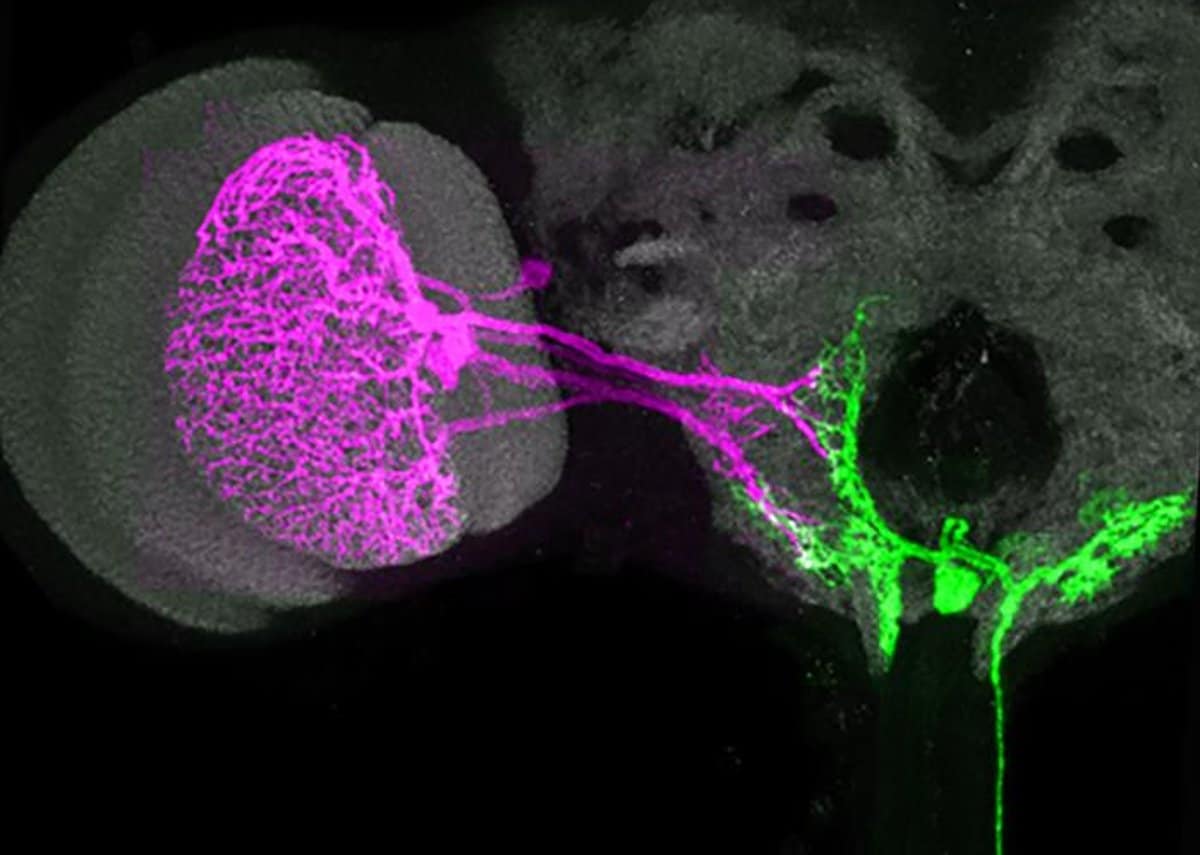Summary: Researchers upended traditional views on motor neurons through their groundbreaking study on fruit flies. Demonstrating that individual motor neurons can produce a variety of complex head movements rather than just simple actions, this research highlights the intricate role these neurons play in bodily motion.
Utilizing advanced laboratory techniques and artificial intelligence, the team was able to stimulate single motor neurons and observe the resultant movements, revealing a sophisticated system akin to a digital thermostat that adjusts based on the body’s current posture. This discovery not only challenges existing notions of motor neuron functionality but also opens new avenues for understanding motor system diseases and the interplay between different types of neurons in movement control.
Key Facts:
- Single Neurons, Multiple Movements: Contrary to expectations, activating individual motor neurons in fruit flies led to a range of head movements, demonstrating the neurons’ ability to drive complex actions.
- Advanced Techniques Reveal Neuron Functionality: The use of light-sensitive molecules and red light stimulation, combined with AI-driven movement tracking, allowed for precise control and observation of motor neuron-induced movements.
- Implications for Motor Disease Understanding: Insights into the precise roles of motor neurons offer potential for advancing our understanding of diseases like ALS, highlighting the importance of sensory feedback in motor control.
Source: Columbia University
Motor neurons are the cells the brain uses to command muscles to act. Scientists typically thought of them as simple connections, much like the cables that link computers with their accessories.
Now, in fly studies, researchers at Columbia’s Zuckerman Institute have discovered that single motor neurons can each direct an insect’s body to move in far more complex ways than previously thought.
The findings were published in Nature on March 20.

“This is one of the first times scientists have analyzed in 3D what single motor neurons do while the body moves naturally,” said Stephen Huston, Ph.D., an associate research scientist at Columbia’s Zuckerman Institute, and the study’s corresponding author.
“You can’t understand how the brain makes the body move without knowing what each motor neuron does, just as you can’t understand how a puppeteer makes a marionette move without understanding what the puppet strings do.”
Motor neurons are the final links through which the brain controls the body’s motions, from a flick of a finger to a blink of an eye. Despite this pivotal duty, researchers are only now beginning to uncover the role that single motor neurons play in movement. Measuring the activity of individual neurons in moving animals has proven to be experimentally difficult.
Now advances in laboratory techniques have made it possible for researchers to manipulate single motor neurons in fruit flies as the insects move freely.
In experiments that began at the Howard Hughes Medical Institute’s Janelia Research Campus in Ashburn, Virginia, the first step for the researchers was to activate light-sensitive molecules in the 25 or so motor neurons that control head movements of the sesame-seed-sized fly.
This enabled the scientists to use red light to switch on motor neurons one at a time. At the same time, they recorded the resulting head motions while using artificial intelligence techniques to track these movements.
“Most neurons act in concert as a population, so we didn’t expect to see much or even any head movement at all when we activated just one motor neuron at a time,” Dr. Huston said.
At most, the scientists had expected that each single motor neuron was hardwired to produce one simple motion — for instance, making the head turn left 10 degrees. Instead, through computational analysis later performed at the Zuckerman Institute, the researchers discovered that activating each motor neuron could make the head rotate in a variety of ways, some even in opposite directions from each other, depending on the starting posture of a fly’s head.
“I was really excited about how specifically we could activate individual neurons to drive these motions,” said Benjamin Gorko, a Ph.D. student in the molecular, cellular, and developmental biology department at the University of California, Santa Barbara, and the study’s first author.
The scientists liken this kind of motor control to a digital thermostat, where punching in a desired temperature will cause a room to warm up or cool down depending on the current room temperature.
In much the same way, when the researchers stimulated each motor neuron, the fly’s head moved towards a pose specific to that motor neuron, with the insect’s head rotating one way or the other to reach that desired position depending on its starting posture.
The research team’s thermostat-like model suggests that when the brain wants to move the body a specific way, it cannot simply stimulate the same set of motor neurons each time and expect the same result. Instead, the brain must calculate which motor neurons to activate based on sensory data it receives about the body’s current posture. Indeed, deactivating sensory neurons that monitor the fly’s head position altered how the insect moved when the scientists stimulated the motor neurons.
Pinpointing what the brain does on the cellular level in fruit flies is more than just an academic exercise. “A better understanding of what motor neurons do can help us understand diseases that affect the motor system, such as amyotrophic lateral sclerosis, also known as ALS or Lou Gehrig’s disease,” Dr. Huston said.
Next the researchers want to investigate how other kinds of neurons in the fly, such as those in the visual system, interact with motor neurons to control movement.
About this neuroscience research news
Author: Ivan Amato
Source: Columbia University
Contact: Ivan Amato – Columbia University
Image: The image is credited to Stephen Huston, Zuckerman Institute; Rebecca Johnston, Friday Harbor Laboratories
Original Research: Closed access.
“Motor neurons generate pose-targeted movements via proprioceptive sculpting” by Stephen Huston et al. Nature
Abstract
Motor neurons generate pose-targeted movements via proprioceptive sculpting
Motor neurons are the final common pathway through which the brain controls movement of the body, forming the basic elements from which all movement is composed. Yet how a single motor neuron contributes to control during natural movement remains unclear.
Here we anatomically and functionally characterize the individual roles of the motor neurons that control head movement in the fly, Drosophila melanogaster.
Counterintuitively, we find that activity in a single motor neuron rotates the head in different directions, depending on the starting posture of the head, such that the head converges towards a pose determined by the identity of the stimulated motor neuron. A feedback model predicts that this convergent behaviour results from motor neuron drive interacting with proprioceptive feedback.
We identify and genetically suppress a single class of proprioceptive neuron that changes the motor neuron-induced convergence as predicted by the feedback model.
These data suggest a framework for how the brain controls movements: instead of directly generating movement in a given direction by activating a fixed set of motor neurons, the brain controls movements by adding bias to a continuing proprioceptive–motor loop.






